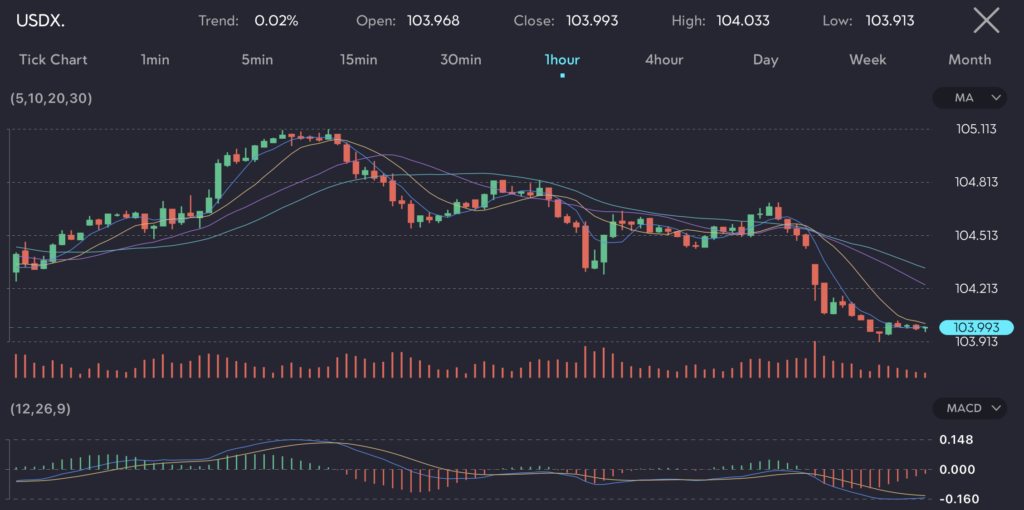Key points:
- PCE inflation rose 2.7% in April, easing fears of spiraling inflation.
- US Dollar Index logged modest losses, reflecting a weaker greenback.
This article is a follow-up to: PCE data to play integral role in Fed rate decisions
The markets breathed a sigh of relief as the Personal Consumption Expenditures (PCE) index showed a year-over-year increase of 2.7% in April. This print alleviated investor concerns over uncontrollable inflation and strengthened expectations for potential interest rate cuts by the US central bank.
The PCE data impacted the US dollar index (Symbol: USDX), which logged modest losses as the US dollar weakened against major currencies. The easing of inflation fears prompted traders to adjust their positions, anticipating a more dovish stance from the Federal Reserve.

The image above shows the decline of the US dollar index, as observed on the VT Markets app.
Market movement in response to the PCE data
The decline of USDX influenced major currency pairs, with the EURUSD gaining about 40 pips, and the USDJPY edged slightly lower toward the 157.00 mark. The weakening of the US dollar reflects market participants’ recalibration in response to the latest inflation data.
Controlled inflation has renewed optimism among investors, who had previously been concerned about rising price pressures and their impact on borrowing costs.
The latest PCE report suggests that the Federal Reserve may be more likely to revisit the rate-cut narrative, potentially updating its outlook to incorporate a more dovish stance.
Related article: Interest rate tug-of-war for central banks: Hawkish vs dovish
What is next for the US dollar index
USDX may continue to weaken if the Federal Reserve signals a more dovish approach following the PCE data. Watch for further movements in major currency pairs like EURUSD and USDJPY as traders digest the inflation report.
You might also be interested in: Most traded forex currency pairs
If inflation remains controlled, the Federal Reserve might implement interest rate cuts, potentially leading to a prolonged period of weakness in the US dollar.









